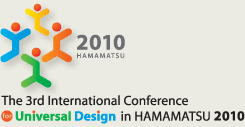Challenge of Removing Landmines: Restoring Fertile Land and Peacefulness
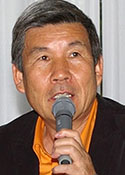
Kiyoshi Amemiya
President, Yamanashi Hitachi Construction Machinery Co., Ltd.: Japan
People whose lives have been threatened by landmines for decades will again have land without landmines. They will no longer have to suffer the gnawing doubt of finding someone in the family not back at the table for supper in the evening. A family shares a laugh in a house on a prairie. I began to truly appreciate the happiness life can bring through our experience of developing landmine excavators. I could not believe how, in a country where automobiles were not in prevalent use, life could be taken without warning and bring with it unhappiness. Actually, our real motive for developing landmine excavators may have been our desire to escape the terrible suffering of seeing people in tragedy, the shock that paralyzed us to even utter words of condolence.
There are some 100 million landmines and apparently 200 different types of landmines buried in the world. And the conditions in which they are planted are different for each mine. They are all laid with malicious intent: some to blow off people’s limbs, others to take people's lives, and still others use special chemicals to make people blind or burn their skin. Once an explosion occurs, people cannot go near the area of the minefield. People without land risk their lives and live on the minefield, tilling the land. The appalling conditions in which they live are beyond the imagination of us Japanese.
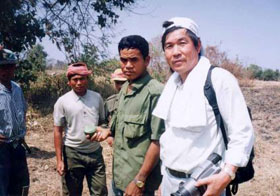
Cambodia in 1995 (Amemiya at far right)
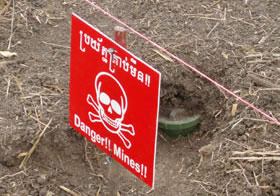
Manual landmine removal is done under appalling conditions. In countries like Cambodia, Afghanistan, and Angola, demining teams work in the thick of jungles, looking for landmines in the heat that could exceed 40 degrees Celsius during the day. In addition to the risks of landmine explosion, they must be prepared to deal with malaria and dengue fever transmitted by mosquitoes and with poisonous snakes. During the rainy season, floods carry new landmines into areas that have already been demined.
To deal with these problems, antipersonnel landmine removal machines are necessary. We have been developing the machines for the last 16 years. During this time, we have developed eight types of attachments that directly remove the landmines. These include the "rotary cutter" landmine removal device and the "push-type" landmine flail. We work to remove landmines that threaten people's lives and hamper restoration efforts and to bring back rich vegetation on the land.
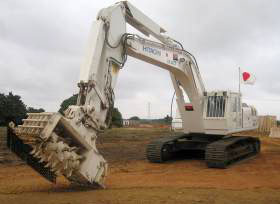
"Rotary cutter" landmine removal machine
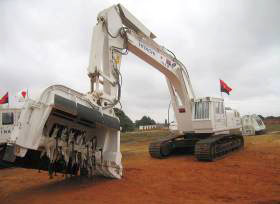
"Rotary flail hammer" landmine removal machine
